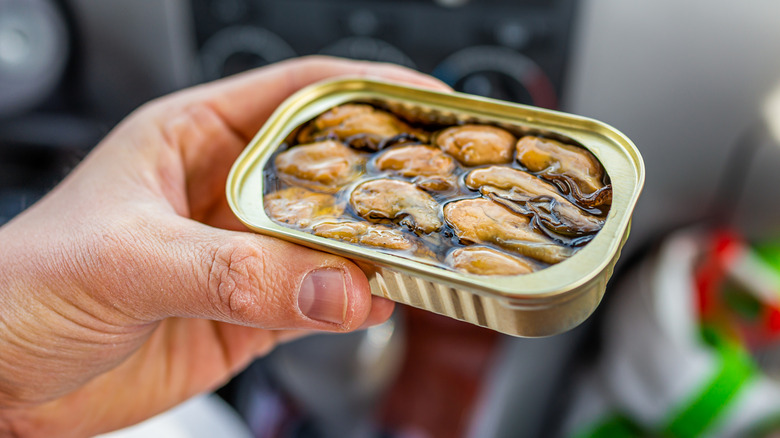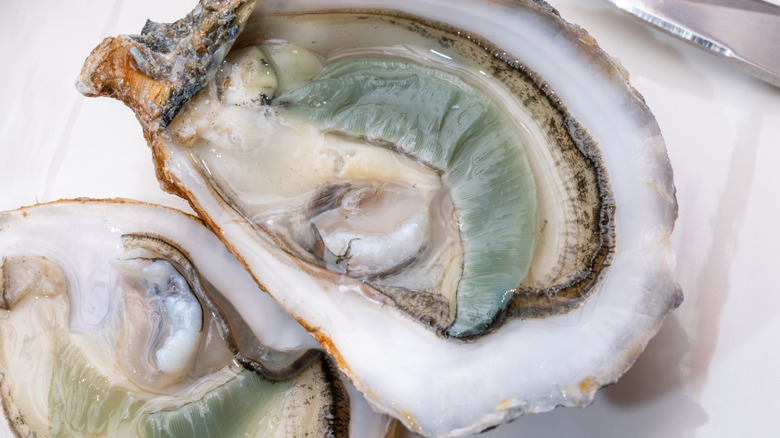Why Are Your Canned Oysters Green (And Are They Safe To Eat)?
Oysters are known as a quick ticket to food poisoning. So when you open a can of delectable smoked oysters, a bright green tint can give you a fright. After all, nobody wants to spend the next 48 hours in the bathroom — or worse, the ER.
Green oysters are especially common during the winter months. They might look scary, but they're perfectly safe to eat. The color comes from plankton, a major part of oysters' diet. Since algae growth ebbs and flows throughout the year, the green glow is a seasonal thing.
If canned oysters give you the ick anyway, rest assured. They're usually cooked, so they're safer than raw — and they're a convenient seafood snack, too. However, you can't always tell if raw oysters will give you food poisoning, either. According to foodsafety.gov, oysters contaminated with Vibrio bacteria (the most common cause of oyster-induced food poisoning) look, taste, and smell just like regular ones.
If you find green oysters, consider it a bonus
Haslea ostrearia, the plankton that gives oysters that gross green color, is actually pretty good for you. It's an antioxidant and it has antibacterial and antiviral properties, too. Oysters are already packed with vitamins and minerals, so the algae add an extra-nutritious punch.
They're not just healthy, though. Green oysters are considered a delicacy in France. The algae gives them a nutty flavor and French foodies have long considered that pop of color to be a sign of refined taste. Farmers cultivate them in ponds designed to promote algae growth. Since green oysters are seasonal (and yield depends on the weather) they're pricier than regular white oysters, too. Verte oysters (or emerald oysters, as they're known in France) fetch up to twice the price as white ones.
Green oysters are found in the United States, but they're not as famous or popular as they are in France. Some harvesters even toss them out — not because there's anything wrong with them, but because they scare off customers. Since green oysters often end up in the trash bin, most Americans aren't familiar with the verdant hue. Of course, green-tinged oysters can go bad, just like white ones. Use your judgment when you bust open a can and look for the telltale signs of spoiled food. If the can is bulging or the oysters smell off, toss them. It's not worth the risk.

